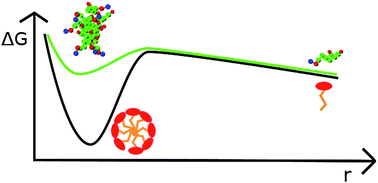Kinetics of formation of bile salt micelles from coarse-grained Langevin dynamics simulations†
Abstract
We examine the mechanism of formation of micelles of dihydroxy bile salts using a coarse-grained, implicit solvent model and Langevin dynamics simulations. We find that bile salt micelles primarily form via addition and removal of monomers, similarly to surfactants with typical head–tail molecular structures, and not via a two-stage mechanism – involving formation of oligomers and their subsequent aggregation to form larger micelles – originally proposed for bile salts. The free energy barrier to removal of single bile monomers from micelles is ≈2kBT, much less than what has been observed for head–tail surfactants. Such a low barrier may be biologically relevant: it allows for rapid release of bile monomers into the intestine, possibly enabling the coverage of fat droplets by bile salt monomers and subsequent release of micelles containing fats and bile salts – a mechanism that is not possible for ionic head–tail surfactants of similar critical micellar concentrations.

- This article is part of the themed collections: Open access articles from Soft Matter and 2016's most accessed Soft Matter articles


 Please wait while we load your content...
Please wait while we load your content...